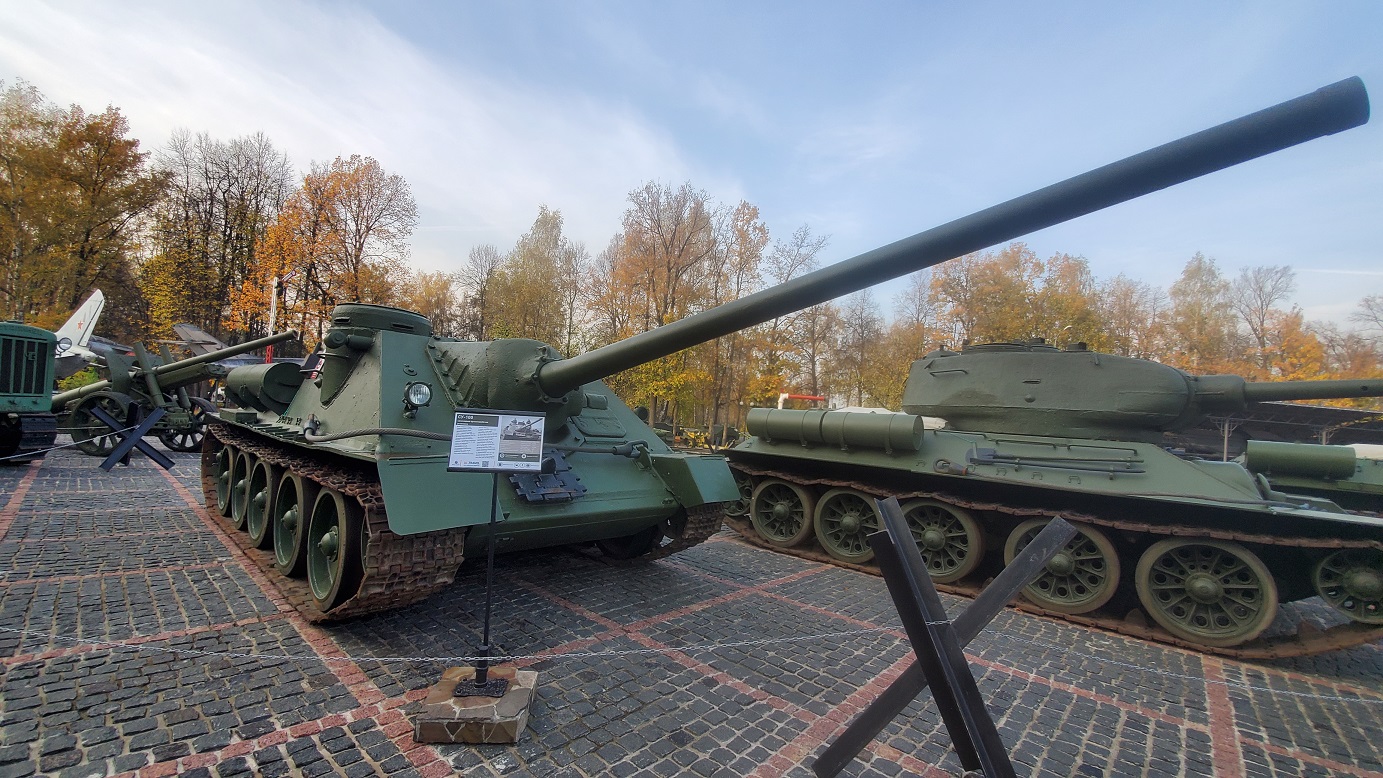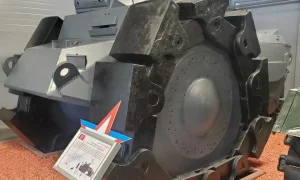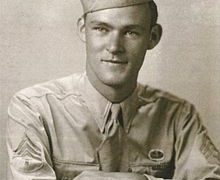Su-100 Tank Destroyer – History and Combat Use
SU-100 – Soviet tank destoyer self-propelled artillery mount of the Second World War period, a class of tank destroyers, medium in class. It was created on the basis of the T-34-85 medium tank by the Uralmashzavod design bureau in late 1943 – early 1944 as a further development of the SU-85 ACS due to the latter’s insufficient capabilities in the fight against German heavy tanks. Serial production of the SU-100 was started at Uralmashzavod in August 1944 and continued until early 1948 of the year. In addition, in 1953-1956, its production under the designation SD-100 under a Soviet license was carried out in Czechoslovakia. A total of 770 vehicles were collected there. All in all, 4011 self-propelled guns of this type were produced in the USSR and Czechoslovakia.
The first combat use of the SU-100 took place in January 1945, and later the SU-100 was used in a number of operations of the Great Patriotic War and the Soviet-Japanese War, but in general their combat use was limited. After the war, the SU-100 was repeatedly modernized and remained in service with the Soviet army for several decades. SU-100s were also supplied to the allies of the USSR and participated in a number of post-war local conflicts, including the most active in the course of the Arab-Israeli wars. By the end of the 20th century, the SU-100 was withdrawn from service in most of the countries that used it, but, nevertheless, in some of them, as of 2007 is still in service.
Uralmash engineers L. I. Gorlitsky, A. L. Kizima, S. I. Samoilov ; engineers of plant number 9 A. N. Bulanov, V. N. Sidorenko and mechanical engineer P. F. Samoilov for the creation of the ACS in 1946 were awarded the title of laureate of the Stalin Prize of the first degree.
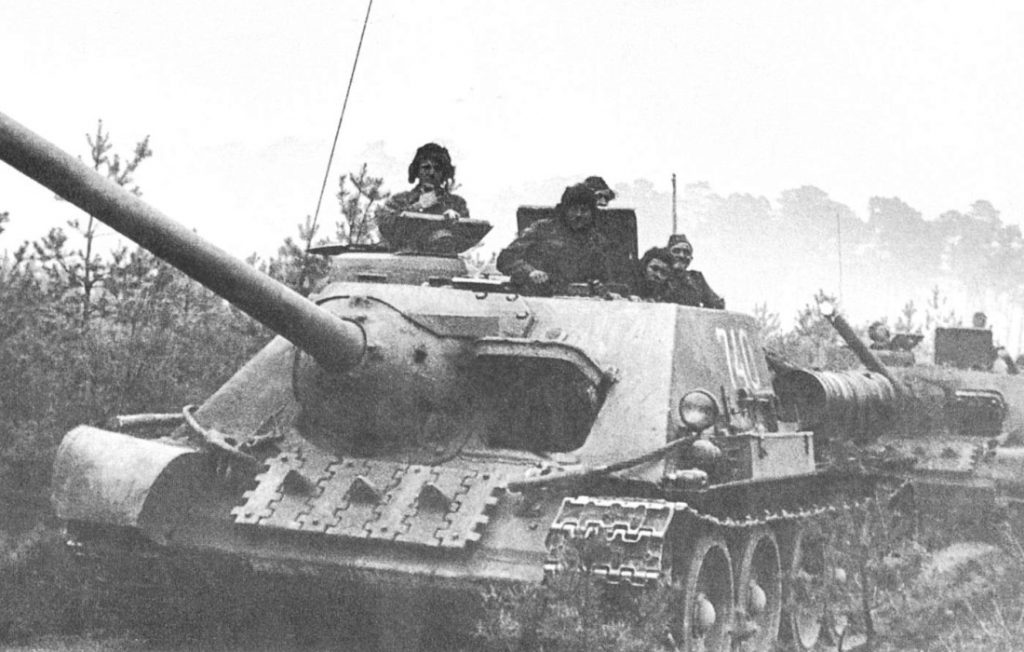
Research and Development
The first self-propelled gun of the tank destroyers class launched into mass production in the USSR was the SU-85. It was created on the basis of the T-34 medium tank and the SU-122 assault gun and went into production in the summer of 1943. The 85-mm D-5S cannon allowed the SU-85 to effectively deal with enemy medium tanks at distances of more than a kilometer, and at shorter distances, and to penetrate the frontal armor of heavy tanks. At the same time, the very first months of the SU-85’s use showed that the power of its gun was insufficient to effectively combat enemy heavy tanks, such as the Panther and Tiger.”, Which had an advantage in firepower and protection: they imposed a battle from long distances.
Combat use in the Great Patriotic War
The first SU-100s were sent for frontline tests in September 1944 and received a satisfactory assessment from the troops for the high capabilities of the gun and good maneuverability. But since the development in the production of the BR-412B armor-piercing projectile dragged on until October of the same year, initially serial SU-100s were delivered only to military educational institutions, and only in November were formed and sent to the front the first self-propelled artillery regiments armed with them. At the end of the year, the first self-propelled artillery brigades armed with SU-100 were formed : Leningradskaya 207, Dvinskaya 208 and 209.
Without taking into account the front-line tests in the fall of 1944, according to the Directorate of Self-Propelled Artillery, for the first time the SU-100 were used in battle in January 1945 during the Budapest operation, and specifically in the battle on January 5 near the town of Bicske. In conditions when Soviet troops were conducting a strategic offensive, the SU-100 was often used when completing a breakthrough in the tactical depth of the enemy’s defense in the role of assault weapons, as, for example, in the East Prussian operation, where the 381st and 1207th self-propelled artillery regiments were involved… At the same time, self-propelled artillery units went on the attack either on the move, or with preparation in a short time.
The first self-propelled artillery brigade SU-100 were sent to the front at the beginning of February 1945 the year : 207 th and 209 th – at the 2nd Ukrainian and 208-I – on 3rd Ukrainian Front. In general, due to the relatively late appearance, the use of the SU-100 in most sectors of the front was limited. Most mass-SU-100 were used in the course of the Balaton operation when they were used in repelling a counterattack of the 6th SS Panzer Army 6 – 16 on March 1945 year. At the same time, the 207th, 208th and 209th self-propelled artillery brigades were involved, as well as several separate self-propelled artillery regimentsSU-100. SU-100 during the operation played a significant role in repelling German tank attacks and have proven highly effective in combating German heavy armored vehicles, including heavy tanks ” Tiger II». In the battle 11 – March 12, due to the large loss of Soviet tanks, in their role involved SU-100, but because of their vulnerability in the melee was ordered to equip each ACS manual machine gun for self-defense against enemy infantry. As a result of the operation, the SU-100 earned extremely high marks from the command.
By March 1945, the 4th Panzer Army of the 1st Ukrainian Front received the 1727th Self-Propelled Artillery Regiment, which took an active part in the Upper Silesian operation, in particular, in repelling the counterstrike of the elite panzer-airborne division “Hermann Goering” on 18 March. In total, during the operation period from March 15 to March 22, losses amounted to 15 (including 4 irrevocably) SU-100 out of 21 machines available at the time of the operation; most of the losses were incurred from enemy artillery fire, and three self-propelled guns got stuck in the swamp.
In preparation for the Berlin operation, at the end of March 1945, the 1st Guards Tank Army received 27 SU-100s, in addition, the 11th Tank Corps, which had 14 self-propelled guns of this type, was subordinated to the army on April 14. The 2nd Guards Tank Army received 31 SU-100s at the end of March, and 15 more vehicles of this type at the beginning of April. By the time the Berlin operation began, the 4th Guards Tank Army was also replenished with equipment and included 28 SU-100s (10 vehicles in the 6th Mechanized Corps and 18 in the 10th Tank Corps as part of the 416th Guards Self-Propelled Artillery shelf)… From the very beginning of the Berlin offensive operation, the SU-100s took an active part in it, which led to inevitable losses – for example, on April 17, during a breakthrough in the area of the Seelow Heights, the 1st Guards Tank Army lost 2 SU-100s (including one burned out), April 19 – 7 cars of this type. The 2nd Guards Tank Army lost 5 SU-100s from April 16 to 21, the 4th Guards Tank Army lost 18 SU-100s from April 16 to 22 (including 6 irrevocably, and two vehicles became victims of faust cartridges )… The SU-100 was also used directly during the storming of Berlin., in particular, entering the battle for the city, the 1st Guards Tank Army had 17 combat-ready SU-100s. In urban battles, self-propelled guns were attached to separate rifle units and subunits in order to strengthen them; so, as of April 24, from the 95th tank brigade, the 9th tank corps (7 T-34-85 and 5 SU-100) was assigned to the 7th rifle corps. As of April 28, the 3rd Shock Army, which was storming Berlin, had 33 SU-100s in the 1818, 1415 and 1049 self-propelled artillery regiments and the 95th tank brigade. As a result of the Berlin operation, the 2nd Guards Tank Army irrevocably lost 7 SU-100s, including 5 vehicles directly in the city, the 3rd – 4 SU-100s, the 4th – 3 SU-100s (from April 23 to May 2). The main reason for the losses was the artillery fire of the enemy.
In March – May 1945, the fourth armed SU-100 self-propelled artillery brigade, the 231st, was formed, but it did not have time to take part in hostilities in Europe. In addition to hostilities on the Soviet-German front, the 208th and 231st self-propelled artillery brigades as part of the 6th Guards Tank Army participated in hostilities against Japan in August 1945.
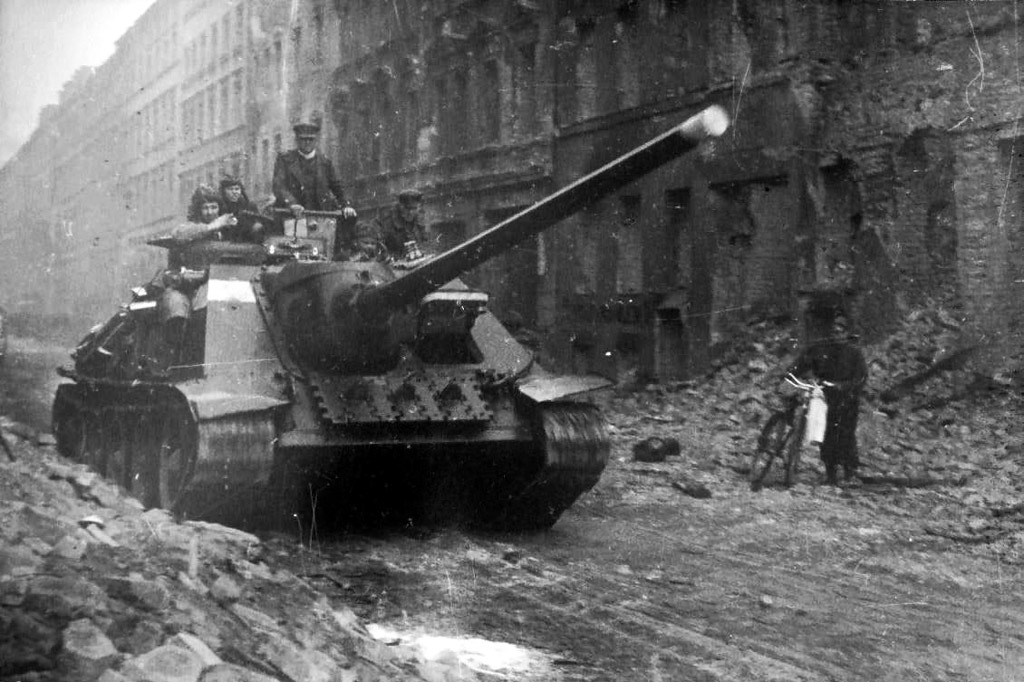
Su100 Tank Destroyer In a City Siege
Post-war use in the USSR
After the end of the war, the SU-100 was actively used by the Soviet army for several more decades. From the late 1950s to the second half of the 1960s, the SU-100s underwent gradual modernization in parallel with the T-34-85 base tank. During the modernization of the ACS, they received more modern observation devices and a radio station, a more reliable engine modification and a number of less significant changes.
The SU-100 was used by Soviet troops in the suppression of the Hungarian uprising in 1956 and during Operation Danube in 1968. As the transfer to other countries, the decommissioning of worn-out vehicles and the placement of self-propelled guns in parks for long-term storage, by the 1980s, the SU-100 practically did not remain in the troops. Nevertheless, they are still used by a limited contingent of Soviet troops in Afghanistan in 1979 – 1980-ies.
In 1981, at the Borisov Tank Repair Plant, 121 SU-100 was equipped with equipment developed by 38 NII BTT, which turned them into automatic self-propelled targets capable of rectilinear movement and firing with a single blank shot loaded into the gun. Thus converted SU-100 used in the exercises ” West-81 “, ” West-83 “, ” West-84 ” and “Fall-88”. After the actual decommissioning Withdrawal of the SU-100 participated in the parade of Victory Day in 1985 and 1990’s. Seven SU-100 took place in the historical part of the 2010 jubilee parade along with nine T-34-85s.
Project evaluation
Thanks to the use of a proven base of a series of medium-sized ACS based on the T-34, the SU-100 was put into production with minimal changes in production: 72% of the ACS parts were borrowed from the T-34-85, 4% from the SU-122, 7.5% – from the SU-85, and only 16.5% were redesigned. On the other hand, the SU-100 also inherited the negative aspects of the base tank, such as the outdated suspension design or the placement of fuel tanks.in the fighting compartment, as well as an unfavorable layout for the ACS. A number of problems were caused by the installation of a more powerful gun, which exhausted the development reserve of the base chassis. The large mass of the 100-mm gun and the thickening of the frontal armor led to overloading of the front rollers, as a result of which, even despite the strengthening of the suspension springs, it was not possible to provide the guaranteed mileage of 3000 km required by the GRAU for the SU-100, which combined with a reduced power reserve, it somewhat reduced the mobility of armed SU-100 units. As of 1948, the SU-100’s guaranteed mileage was only 1000 k. Departure of the trunk on the SU-100 it increased even more compared to the SU-85, making it difficult to maneuver on rough terrain and in settlements; the risk of the barrel sticking into the ground increased, which could lead to a breakdown of the mechanisms or clogging of the barrel bore, which created the danger of its rupture during the next shot. In addition, the relatively large size and weight of 100-mm unitary rounds reduced the ammunition load of the ACS by one and a half times and led to a slight decrease in the rate of fire, but due to this, the SPG’s firepower increased many times, leaving it in the medium-weight class with such a powerful and a fairly large caliber gun without unnecessarily increasing the combat mass of the vehicle. With the adoption of the SU-100 RKKA received a highly effective anti-tank weapon with extremely powerful weapons, capable of fighting all serial samples of German armored vehicles. Even in the post-war period, despite the active improvement of the design of tanks, the SU-100, although with varying success, continued to remain effective against them, which was largely due to the commonality of the gun with the main Soviet tank of the first post-war period – T-54, T-55.
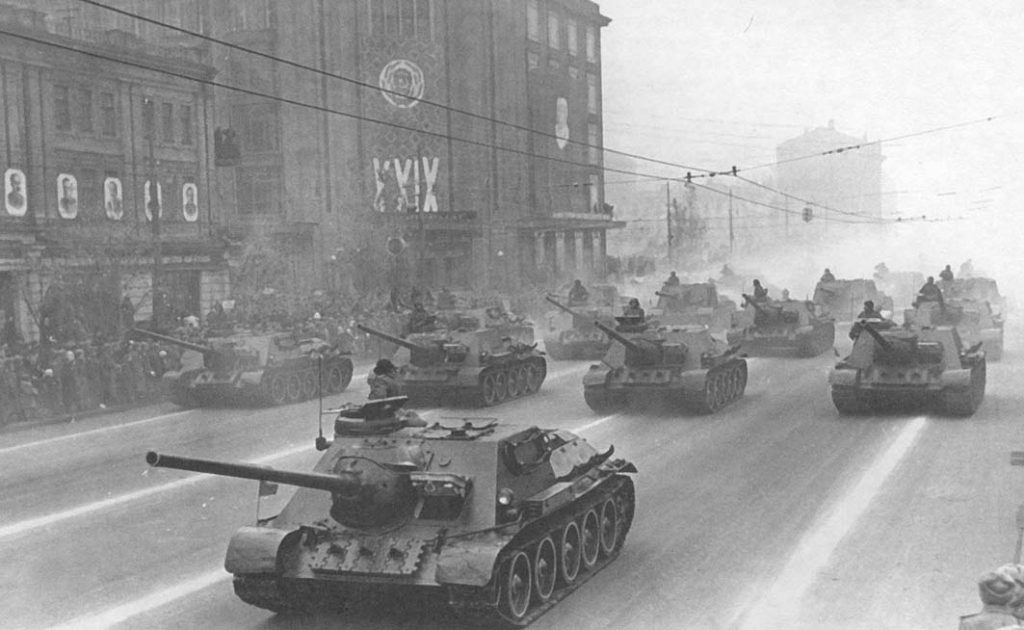
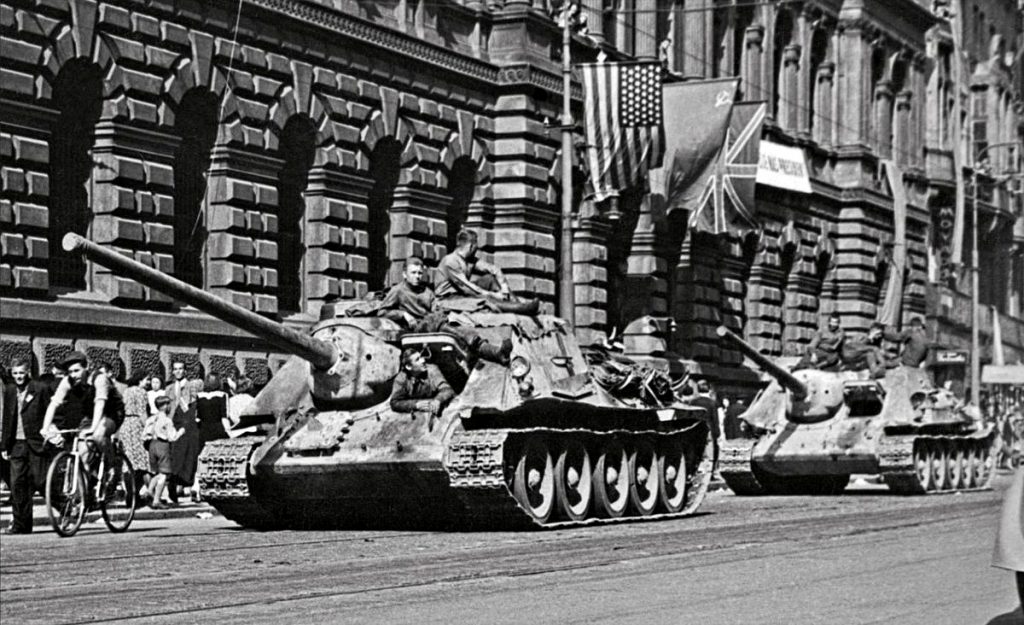
Analogs
During World War II, self-propelled artillery mounts similar to SU-100 – tank destroyers of a closed reckless layout with anti- cannon armor – were mass-produced only in Germany and partly in Italy, although the latter’s self-propelled guns belonged to the class of assault guns to a greater extent. The closest to the SU-100 and the most advanced of the German self-propelled guns of this type was the Jagdpanzer IV/70, based on the chassis of the most massive medium tank Pz.Kpfw.IV and launched into production in August 1944.
With a slight superiority in frontal armor, the Jagd.Pz.IV was inferior to the SU-100 in onboard armor. The 75 mm StuK.42 cannon installed on the Jagd.Pz.IV was approximately equivalent to the D-10S in terms of the armor penetration of caliber armor-piercing shells ; the presence of sub – caliber projectiles significantly increased its capabilities in this regard, but due to the extreme shortage of these projectiles in practice, they were used extremely rarely… At the same time, the StuK.42 had 2.3 times less projectile weight and almost half the muzzle energy, which, under certain conditions, further reduced its actual armor penetration compared to the more powerful D-10. In addition, the Soviet method of measuring armor penetration often gave underestimated results, and the real penetration of the D-10 was more tabular. Even lighter than the ammunition of the Soviet self-propelled gun was the 75-mm high-explosive fragmentation projectile of the StuK.42 anti – tank gun of the Sprgr.42 brand, weighing only 5.74 kg, in addition, due to the high initial velocity of the projectile due to the long barrel length, the hull the fragmentation grenade had thick walls and a reduced explosive charge of only 620 g of cast ammotol, which greatly reduced its capabilities in the fight against unarmored targets and cannot be compared with the powerful 15.6 kg steel high-explosive fragmentation grenade OF-412, equipped with 1.46 kg of cast TNT. On the other hand, the advantages of the Jagd.Pz.IV included the presence of a defensive course 7.92 mm MG-42 machine gun, a low vehicle height, which is the lowest for a vehicle of this class, better production of armor-piercing shells and shells in general, as well as the presence of a protective and ballistic cap of BR shells, a larger ammunition load – 55 rounds against 33 for the SU-100, and a slightly higher rate of fire due to the half mass of 75-mm unitary rounds… The Jagd.Pz.IV was based on the chassis of the Pz.Kpfw.IV, which had been worked out in production and brought to a relatively high degree of reliability, but, like the SU-100, it suffered from overloading of the front rollers, and to an even greater extent due to the lower capabilities of the base chassis.
The Jagdpanther self-propelled guns, based on the Panther tank chassis, had better characteristics, although its comparison with the SU-100 is not entirely legitimate, since the 45-ton Jagdpanther was a heavy self-propelled gun by weight. With slightly more powerful frontal and side protection, the Jagdpanther carried the 88-mm KwK.43 cannon, which significantly surpassed the D-10S in terms of armor penetration even with caliber shells, but was inferior in muzzle energy. The Jagdpanther had a machine gun for close-range defense against enemy infantry, surpassed the SU-100 in the rate of fire and carried 57 rounds of ammunition, although the power of the KwK.43 high-explosive fragmentation projectile was still inferior to the D-10S… The rest of the similar class lighter German SPGs, like all Italian SPGs, were significantly inferior to the SU-100.


